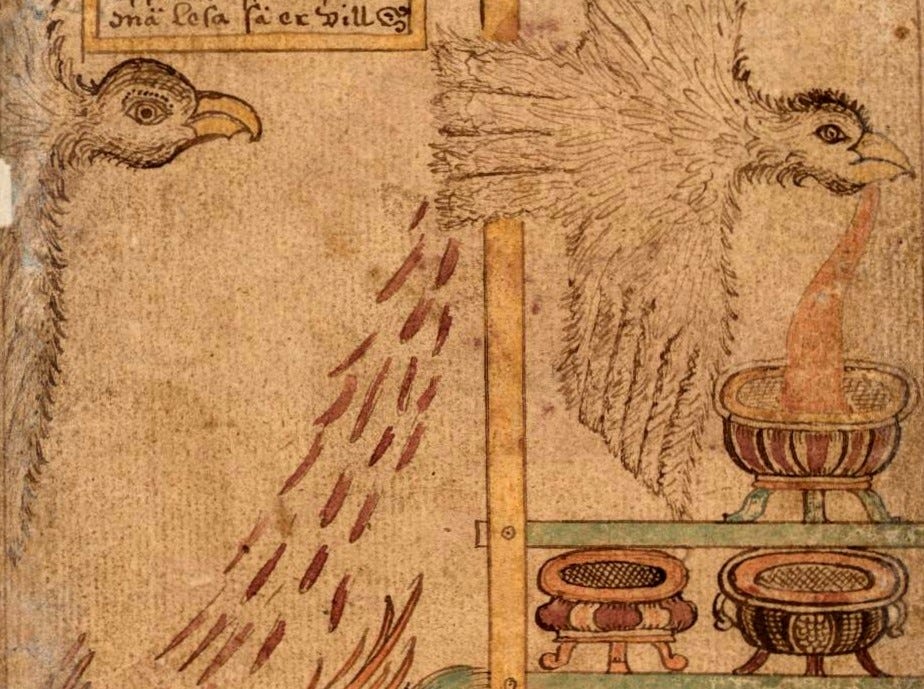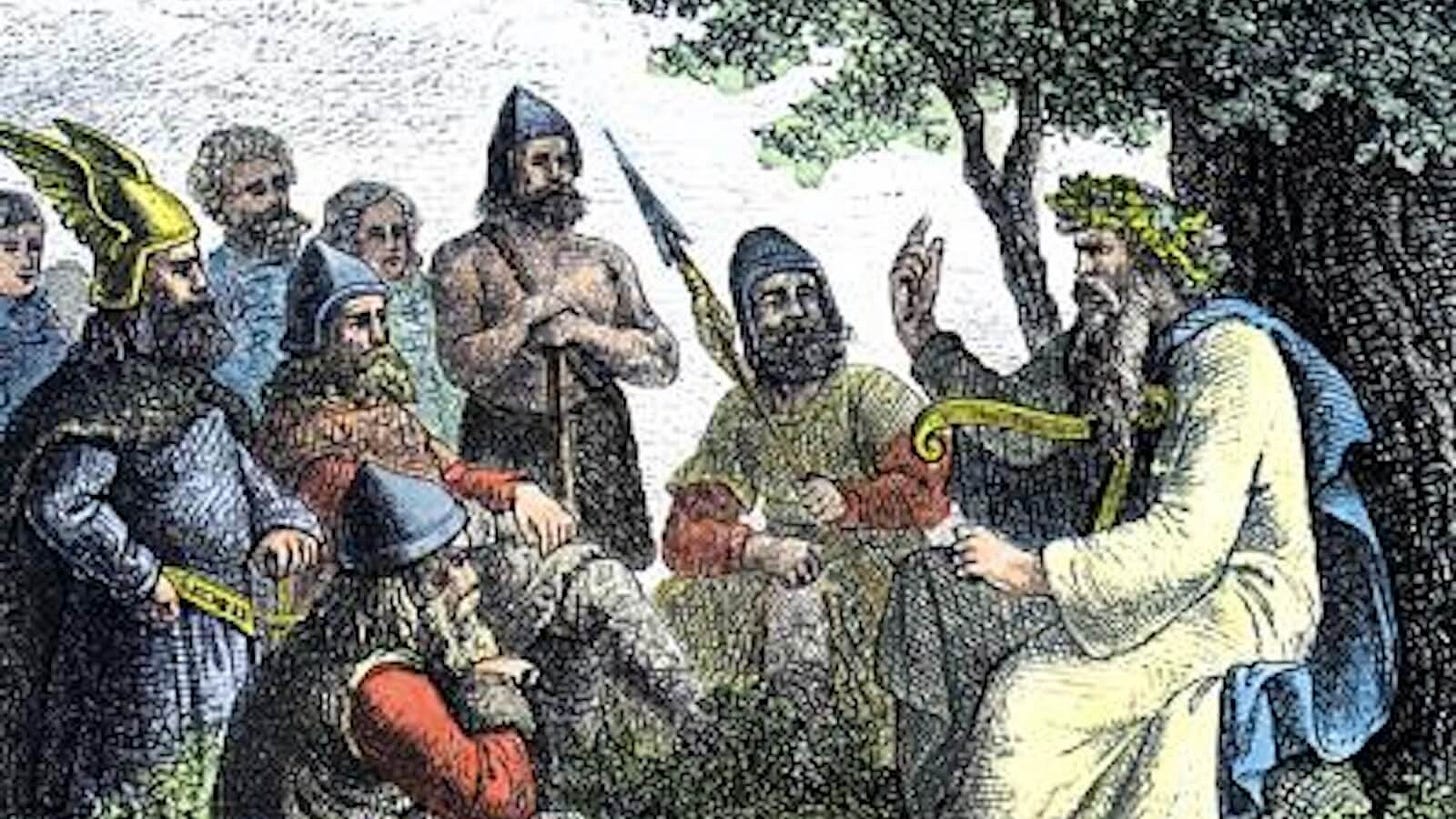To demonstrate the complexity and ingenuity of early Germanic poetry, I would like to examine one of my favorite stanzas of Vellekla, a Norse Poem about Haakon Jarl written in the Courtly Metre (Dróttkvætt). This was the most complex form of Norse poetry, and had extremely strict rules.1
Hljóta munk (ne hlítir) hertýs (of þat frýju) fyr ǫrþeysi at ausa austr víngnoðar flausta;
Translated literally:
It is I who will get to (nor need urging to) bail for the fleet’s Speed-drivers the flooding of the war-god’s wine-boat;
As you can see, the use of complex kennings make this poem almost impossible to understand for a modern audience without an explanation.
The fleet’s speed-drivers obviously refers to sailors. The War-God is Oðinn, and his wine-boat is his chest or stomach. With this information, we can interpret the passage.
It is I (referring to the Skald) who will get to bail the flooding of Oðinn’s chest. This wine-boat was “flooded” when he drank the Mead of Poetry, and thus to “bail” it the Skald brings the Mead out. Thus, to “bail for the fleet’s speed-drivers the flooding of the War-God’s wine-boat” is literally to recite poetry for the sailors (the audience of the poem).
I honestly find it quite sad that it takes this kind of in-depth explanation to explain these poems to a modern audience, as those listening in its day — being already familiar with the meaning and usage of kennings — would be able to instantly interpret it. Nevertheless, I still thoroughly enjoy reading them.
Written for iFunny on June 16 2021
From Wikipedia:
In the odd-numbered lines (equivalent to the a-verse of the traditional alliterative line):
Two of the stressed syllables alliterate with each other.
Two of the stressed syllables share partial rhyme of consonants (which was called skothending) with dissimilar vowels (e.g. hat and bet), not necessarily at the end of the word (e.g. touching and orchard).
In the even lines (equivalent to the b-verse of the traditional alliterative line):
The first stressed syllable must alliterate with the alliterative stressed syllables of the previous line.
Two of the stressed syllables rhyme (aðalhending, e.g. hat and cat), not necessarily at the end of the word (e.g. torching and orchard).
Failed to render LaTeX expression — no expression found





